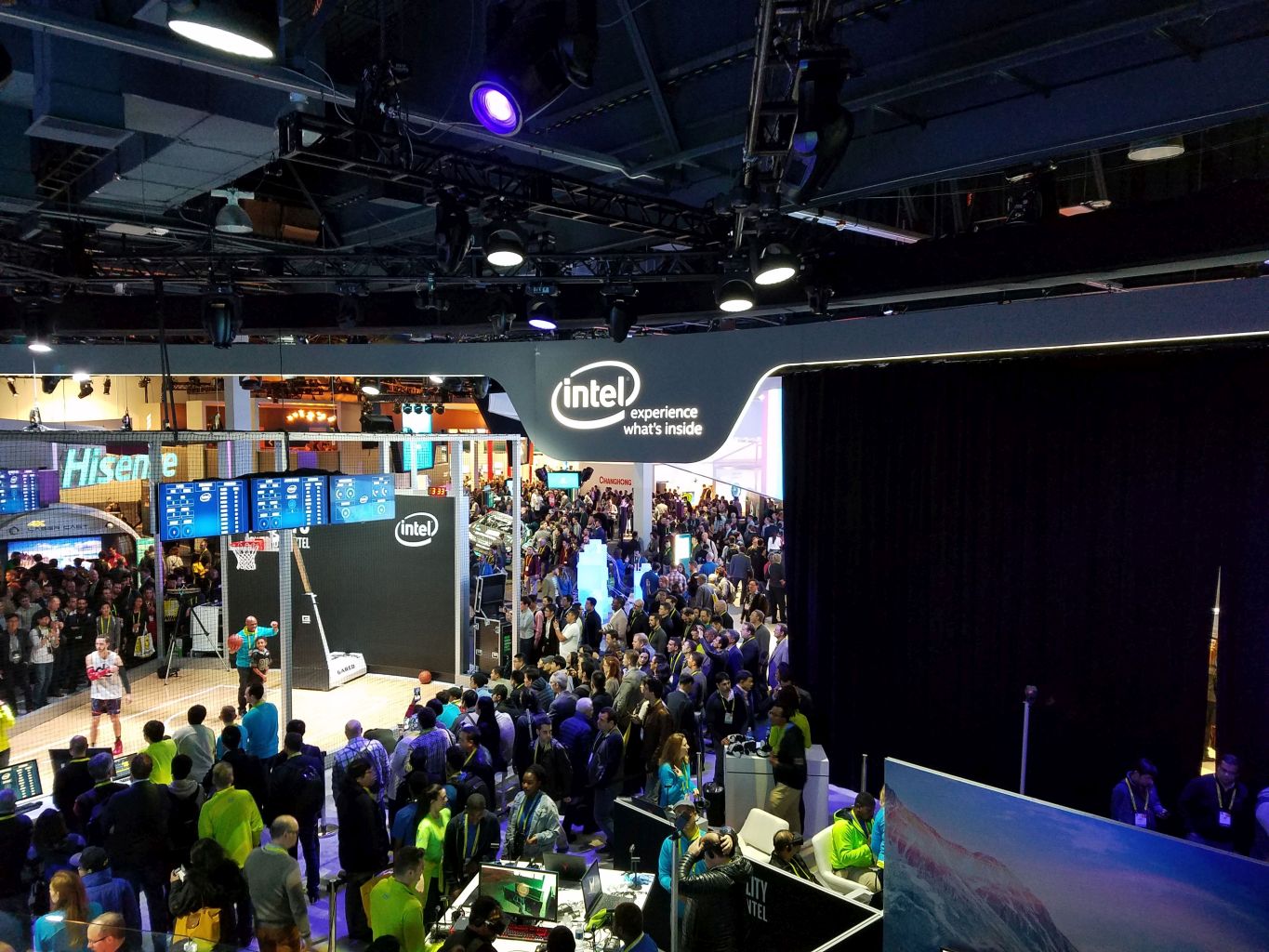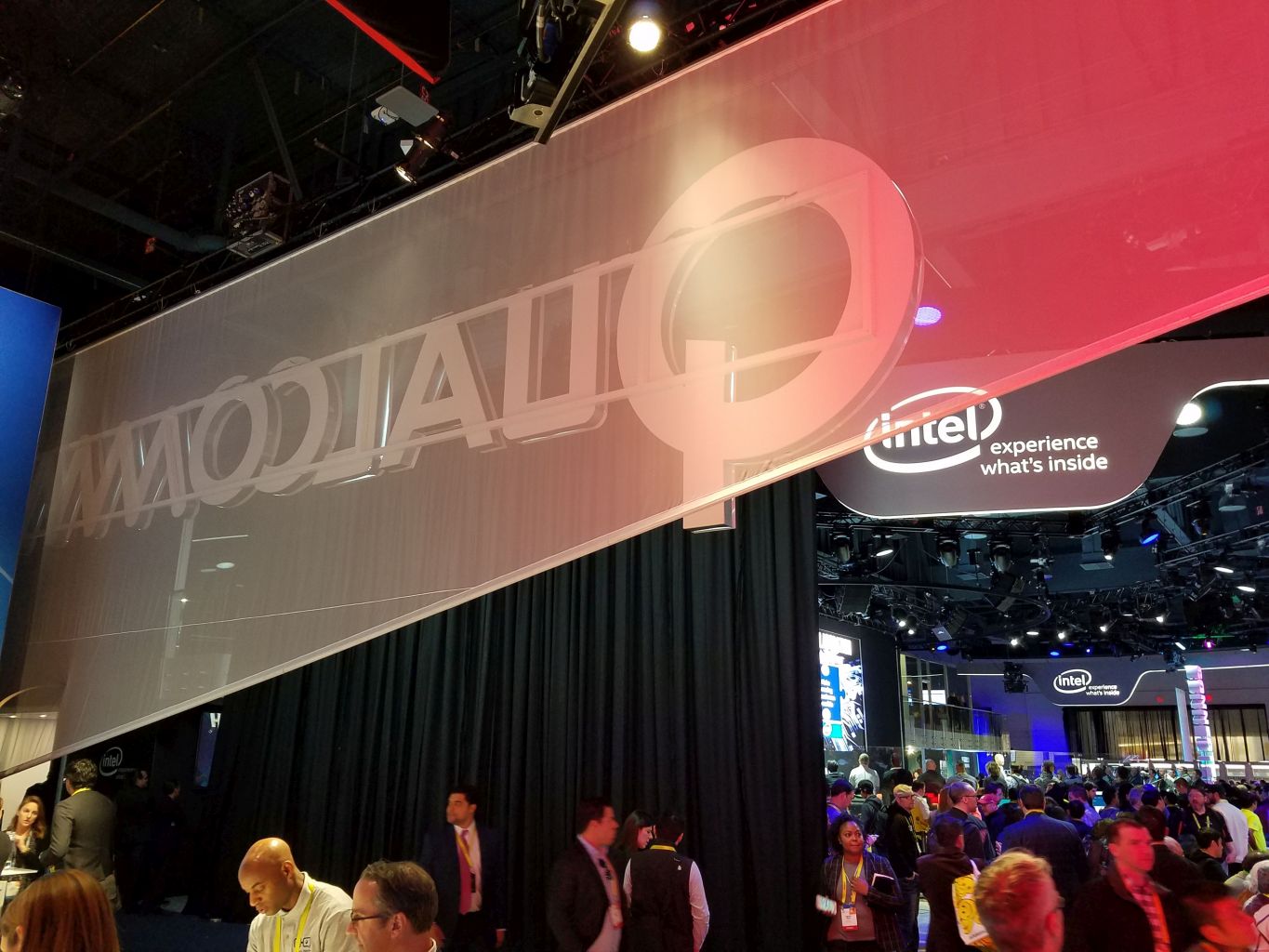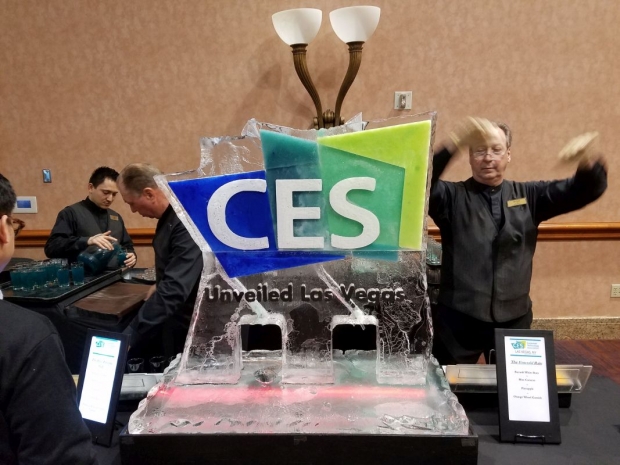Intel and Qualcomm had booths next to each other at CES 2017 and this has been going on for a few CES shows. The difference this year, was that Intel ordered a huge curtain to block the view to Qualcomm’s logo standing on the side of the booth. Qualcomm didn't.
We are not sure how the CES 2017 organizers were OK with it, but it definitely felt at least a bit tasteless to do this to a company you are directly competing against. We took the picture from both Intel's and Qualcomm's booth.

View from the Intel's booth
This of course has a big background and deserves a bit of an explantation. Intel won part of the iPhone 7 modem deal and clearly stated that it wants to compete even more on 5G, picking on Qualcomm's core business more actively. Intel chose CES 2017 to announce its 5G modem, while Qualcomm had already announced the Snapdragon X50 5G SoC. Qualcomm is expected to deploy Snapdragon X50 for testing in the second half of 2017 and is expected to do 5G trials with AT&T, SK Telekom and Verizon.
At the same time, Microsoft shocked the IT world by confirming that the Snapdragon 800 series of chips have full support for Windows 10. We saw a demo of a Snapdragon 820 machine and there will definitely be Snapdragon 835 notebooks supporting Windows 10 coming to the market later this year. Needless to say, the companies developed a big rivalry in the last two years.
Last year, Intel let go some 12,000 employees in April while Qualcomm let go off some 4,500 people in order to restructure the company. In the meantime Qualcomm has acquired an automotive SoC giant NXP for $47 billion preparing the company to be a big influence in the automotive industry.

View from the Qualcomm's booth
Fudzilla also noticed that there have been quite a few people crossing over from Intel to Qualcomm and in the other direction, implying that Qualcomm can use some help in competing wotj Intel on the PC side of the industry.
Intel on the other hand has its hands full. Its big rival AMD is just weeks from releasing the Summit Ridge codenamed Zen-architecture based 14nm eight core Ryzen processor. The first impression is that the CPU looks really competitive to Intel's high end Extreme Edition desktop line and AMD announced more than a dozen systems that are expected to launch in Q1 2017 and onward.
Later in 2017, both AMD and even Qualcomm are expected to announce their server solution and increase the pressure on Intel in this heavily profitable market. Back in 2013 Intel stated that for every 400 smartphones you need one server. Since the amount of traffic grew massively between 2013 and today and the fact that video is now 55 percent of all internet traffic, we believe that you need one server for a few hundred phones, definitely less than 400 these days.
Qualcomm was the first to announce and showcase the 10nm SoC, and we saw a live demo of the Snapdragon 835 based prototype of a phone. As a few executives mentioned the other day, there is a high expectation that Snapdragon 835 might end up being even more successful than Snapdragon 820, and we already pointed out that Snapdragon 820 had more than 200 design wins. The performance, footprint and 25 percent better battery life compared to Snapdragon 820 have every chance to make a three billion transistor Snapdragon 835 an instant success.
Intel has completely abandoned smartphones after billions of investments and a failure to make a dent in this huge market. Intel’s X86 based mobile SoCs simply failed to compete with ARM based chips.
So far, Intel has tried and failed to launch a 10nm processors, and this is happening to a company that owns some of the world’s most advanced and biggest FABs in the world. After decade of tick-tock execution, the recent launch of Kaby Lake, the third generation 14nm processors for desktop and notebooks definitely confirmed there's trouble in paradise. One can only hope that Intel can get the 10nm processors out before the end of 2017 but it has became increasingly hard to migrate from one to another manufacturing node.
The current state of affairs shows that the curtain is definitely more than just a symbolic gesture.




